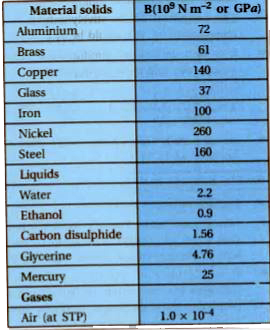Text Solution
Verified by Experts
|
Topper's Solved these Questions
MACHANICAL PROPERTIES OF SOLIDS
KUMAR PRAKASHAN|Exercise SECTION-A TRY YOURSELF (VSQs)|40 VideosView PlaylistMACHANICAL PROPERTIES OF SOLIDS
KUMAR PRAKASHAN|Exercise SECTION-B|45 VideosView PlaylistLAW OF MOTION
KUMAR PRAKASHAN|Exercise (QUESTION PAPER) SECTION-D|1 VideosView PlaylistMECHANICAL PROPERTIES OF FLUIDS
KUMAR PRAKASHAN|Exercise QUESTION PAPER (SECTION -C)|3 VideosView Playlist
Similar Questions
Explore conceptually related problems
Knowledge Check
Similar Questions
Explore conceptually related problems
KUMAR PRAKASHAN-MACHANICAL PROPERTIES OF SOLIDS -QUESTION PAPER
- Explain Bulk Modulus.
01:21
|
Playing Now - What is called brittle material ?
03:41
|
Play - Write Hooke's law.
03:50
|
Play - What is effect of tensile force on lateral dimensions ?
01:32
|
Play - What is buckling?
02:12
|
Play - What is compressibility ? Write its formula, unit and dimensional form...
02:19
|
Play - Why are the springs made of steel and not of copper ?
01:13
|
Play - Clarify the difference between stress and pressure.
01:16
|
Play - Derive an expression for elastic potential energy per unit volume stor...
03:47
|
Play - A rigid bar of mass 15 kg is supported symmetrically by three wires ea...
02:21
|
Play - What is the density of water at a depth where pressure is 80.0 atm, gi...
07:24
|
Play - Two strips of metal are riveted together at their ends by four rivets,...
02:52
|
Play
